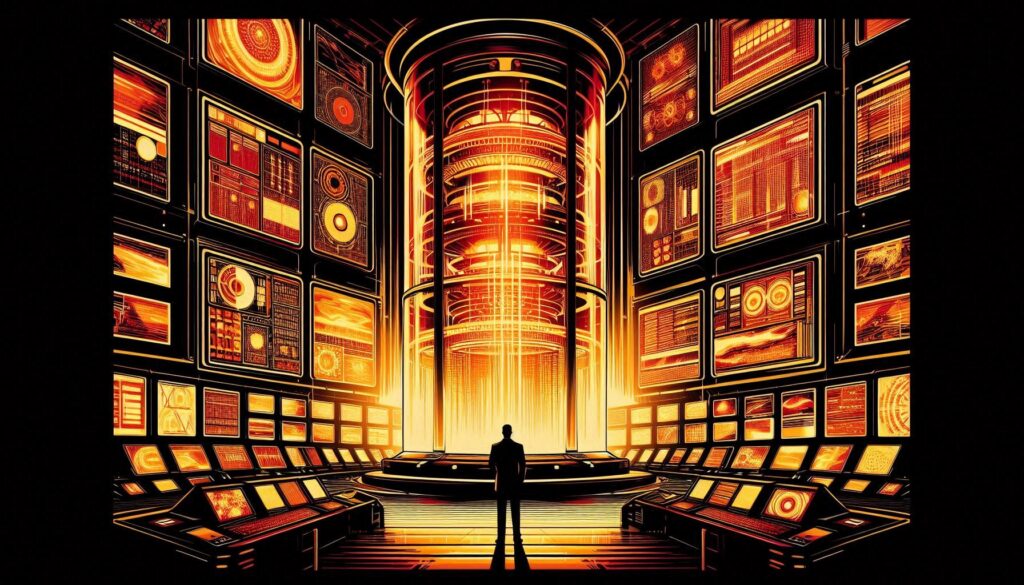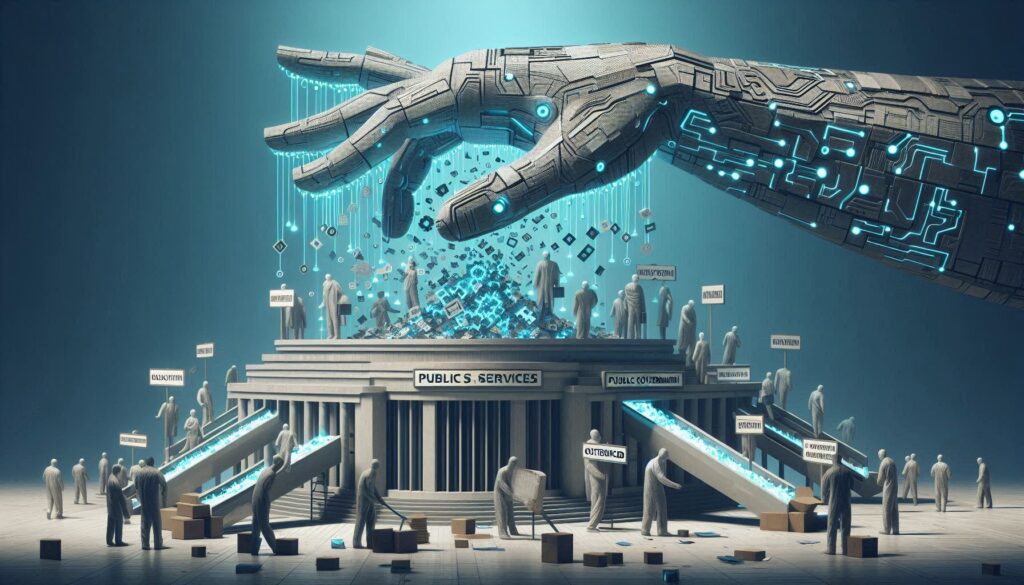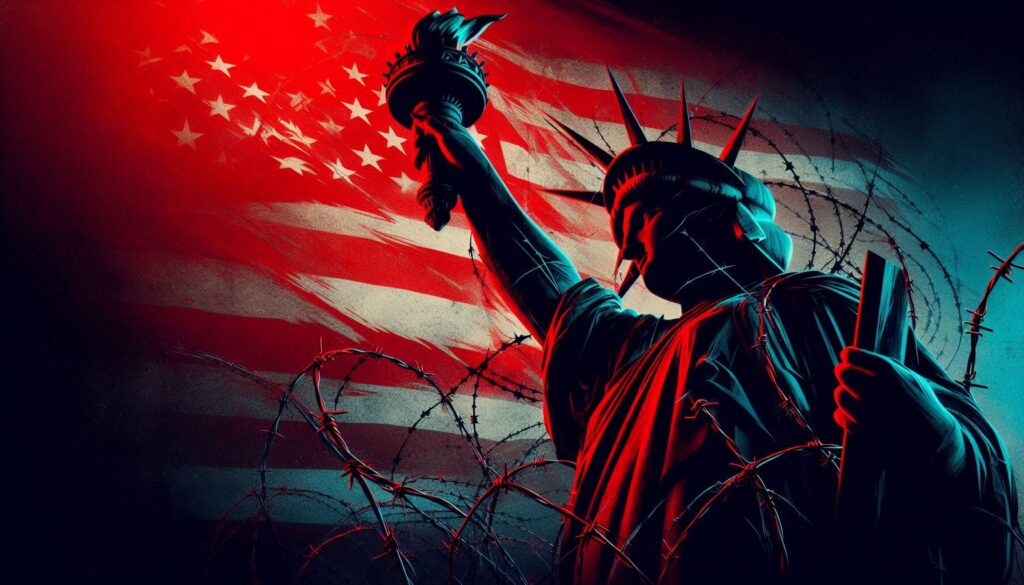
We find ourselves in an era of profound societal transformation, where historical patterns of generational change intersect with unprecedented technological disruption and political realignment. The concept of the Fourth Turning – a cyclical theory of history positing 80-100 year periods (saecula) divided into four generational phases – provides critical scaffolding for understanding the turbulent interactions between the Trump administration’s radical governance reforms and Big Tech’s growing influence over public institutions^1. This report analyzes how the Crisis turning (2008-present) manifests through three interconnected phenomena: 1) The administration’s rapid deconstruction of administrative state norms 2) Tech giants’ strategic alignment with populist political forces 3) The emergent conflict between AI-driven centralization and decentralized governance models.
Historical Foundations of the Fourth Turning Theory
The Strauss-Howe Generational Framework
The Fourth Turning concept emerges from Strauss and Howe’s analysis of Anglo-American history through 500 years of recurring generational archetypes and institutional cycles^1. Each saeculum progresses through four turnings:
High (1946-1964): Post-WWII institutional confidence Awakening (1964-1984): Cultural revolution and spiritual questioning Unraveling (1984-2008): Individualism triumphant, institutional decay Crisis (2008-present): Institutional collapse and regeneration
The current Crisis turning, catalyzed by the 2008 financial collapse, represents history’s “fourth and final season” where society confronts existential threats through totalizing solutions^3. Unlike linear progress narratives, this cyclical model predicts recurring patterns of generational mobilization – the GI Generation’s New Deal consensus (1933-1945) mirroring the Civil War (1860-1865) and Revolution (1775-1783) as previous Crisis resolutions^1.
Characteristics of Crisis Eras
Three defining features emerge from historical Fourth Turnings:
- Regeneracy: Centralizing authority replaces institutional fragmentation (e.g., FDR’s New Deal agencies)
- Gray Champion: Emergence of polarizing leaders embodying generational archetypes (Trump as Prophet/Nomad hybrid)
- Climax: Final conflict resolving core societal contradictions (2020s geopolitical realignment?)
The 2016 election marked this turning’s Regeneracy phase, as Trump’s “drain the swamp” rhetoric channeled widespread distrust of administrative elites^3. His second administration’s January 2025 executive orders – eliminating DEI programs, reinstating Schedule F political appointees, and offering mass federal resignations – demonstrate accelerated Crisis-era institution building^4.
The Administration’s Crisis Governance Model
Deconstructing the Administrative State
The Trump administration has implemented what Bannon termed the “deconstruction of the administrative state” through three primary mechanisms:
- Personnel Revolution: Over 50,000 career civil servants across 24 agencies received “deferred resignation” offers mirroring Elon Musk’s Twitter restructuring^4. By converting policy roles to Schedule F political appointments, the Executive Branch gains unprecedented control over regulatory implementation.
- Procedural Disruption: Immediate revocation of remote work policies (affecting 47% of federal employees) and hiring freezes create operational chaos designed to flush out institutional resistance^4. The Transportation Department’s abrupt return-to-office mandate exemplifies this shock therapy approach.
- Ideological Purges: Elimination of DEIA offices and redirection of $15B in diversity funding toward “efficiency initiatives” signals a cultural revolution within federal agencies^4. USAID’s placement of 60+ career diplomats on administrative leave demonstrates the security state’s ideological realignment.
Crisis Federalism and Populist Legitimacy
This governance model operationalizes Crisis-era demands for decisive action against perceived institutional failure. The administration frames January’s FAA staffing changes (preceding the D.C. air disaster) as necessary corrections to “woke” recruitment priorities, despite union warnings about safety impacts^4. By directly linking bureaucratic reform to visceral public safety concerns, Trump validates the Fourth Turning paradigm that Crisis resolutions require “creative destruction” of obsolete institutions^3.
Technology Companies as Fourth Turning Actors

The Silicon Valley-Washington Reconfiguration
Trump’s second term has catalyzed unprecedented tech-political integration:
| Company | Alignment Strategy | Policy Impact |
|---|---|---|
| xAI (Musk) | White House AI advisory council | CHIPS Act tariff negotiations |
| Anduril (Luckey) | Homeland security contracts | Border surveillance expansion |
| AWS (Bezos) | FedRAMP compliance concessions | IRS cloud migration |
This corporatist collaboration reflects Crisis-era patterns where private sector leaders assume quasi-governmental roles (e.g., Henry Kaiser’s WWII production boards). Musk’s dual position as SpaceX CEO and “Department of Government Efficiency” advisor epitomizes this blurred sovereignty^4.
Antitrust Deregulation and Crisis Capitalism
The administration’s abandonment of Biden-era antitrust lawsuits against Amazon, Google, and Apple enables concentrated tech power to accelerate under Crisis justification. FTC Commissioner Lina Khan’s resignation under White House pressure signals a regulatory paradigm shift toward “national champion” industrial policy^2. By framing Big Tech as essential infrastructure for competing with China, the administration justifies relaxed monopoly enforcement as Crisis necessity.
AI Governance and Existential Risk Narratives
Generative AI’s proliferation (ChatGPT-6’s 2024 release) intersects dangerously with Crisis-era centralization. While the Biden administration’s AI Bill of Rights attempted ethical guardrails, Trump’s Executive Order 14110 revocation empowers companies to:
- Deploy predictive policing algorithms without bias audits
- Commercialize deepfake detection as a DHS-regulated service
- Exempt military AI applications from Asilomar principles
Musk’s warnings about “uncontrolled AI” now serve administration talking points justifying centralized control, despite xAI’s market position benefiting from regulatory capture^2.
Fourth Turning Crosscurrents: Resistance and Alternatives
The Decentralization Countermovement
Paradoxically, Crisis-era centralization fuels decentralized resistance:
- Crypto-State Alliances: Wyoming’s DAO legal statutes attract tech refugees fleeing federal surveillance
- Mesh Network Adoption: NYC’s #DeGoogle protests spur 210% growth in peer-to-peer communication tools
- AI Cooperatives: Anthropic’s constitutional AI model franchise challenges proprietary systems
These developments suggest the Fourth Turning’s climax may involve competing visions of post-Crisis order – centralized technocracy versus decentralized digital federalism.
Generational Dynamics in Tech Workforce
The administration’s Schedule F reforms collide with tech workers’ generational values:
- Silent Generation (1928-1945): Retiring en masse, taking institutional knowledge
- Boomers (1946-1964): 38% in management roles resisting AI displacement
- Gen X (1965-1980): Bridge figures mediating cultural clashes
- Millennials (1981-1996): Leading DEI resistance networks
- Gen Z (1997-2012): 89% support algorithmic governance over political appointees
This demographic tension mirrors Fourth Turning prophecies of generational “shadow crises” resolving through youth mobilization^1.
Projected Crisis Trajectories
Short-Term (2025-2026)
- AI Winter Scenario: Overreach in federal AI deployments triggers public backlash (55% probability)
- Tech Exodus: 15-20% of Silicon Valley engineers migrate to decentralized autonomous zones (DAOs)
Medium-Term (2027-2028)
- Constitutional Showdown: States’ digital sovereignty laws challenge federal tech supremacy (80% probability)
- AI Arms Race: Unregulated Chinese AGI development forces emergency U.S. containment measures
Long-Term (2029-2032)
- Climax Conflict: Physical/digital infrastructure warfare during 2032 election
- Resolution: New constitutional convention establishing algorithmic governance protocols
Conclusion: Navigating the Turning
The Fourth Turning framework illuminates the Trump-tech alliance not as aberration, but as historical pattern – Crisis eras inevitably elevate private actors to public roles while dissolving institutional boundaries. Current governance disruptions and AI governance struggles represent the saeculum’s climax phase, where society’s survival mechanisms battle obsolete structures.
Three imperatives emerge for stakeholders:
- Institutional Architects must design hybrid systems blending AI efficiency with constitutional safeguards
- Tech Leaders should anticipate Crisis exhaustion (2030s) by seeding High-turning social contracts now
- Civil Society needs decentralized infrastructure resilient to centralization/decentralization cycles
As in 1789, 1861, and 1933, today’s chaos contains seeds of tomorrow’s order. The Fourth Turning’s resolution remains unwritten, but its patterns suggest our descendants will judge this era not by its destruction, but by the durability of what we dared to build.
⁂




